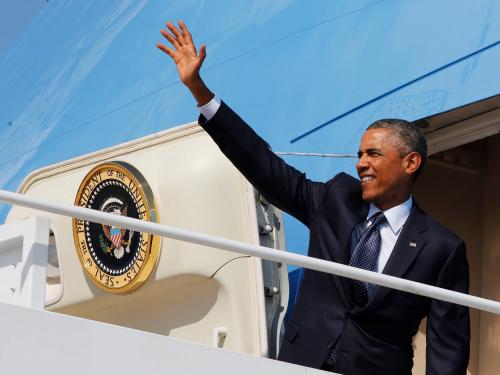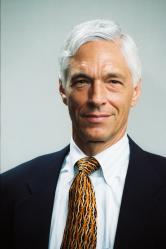This piece was originally published on Nikkei Asian Review on January 10, 2017.
Will U.S. President-elect Donald Trump attend the 2017 Asia-Pacific Economic Cooperation summit in Vietnam? Or the 2017 East Asia Summit in the Philippines? Does it even matter?
Regular multilateral summits between the world’s major leaders have been a fixture of international relations since 1975. That is when the leaders of the Group of Six leading industrial nations — the U.S., the U.K., Germany, France, Italy and Japan — met in Rambouillet, France, to address what was then the world’s most serious recession since the 1930s.
The G-6 morphed into the G-7 with the entry of Canada in 1976 and then the G-8. (Russia joined in 1998 before being suspended in 2014 after its annexation of Crimea.) APEC began holding annual summits in 1989. Annual meetings of the EAS began in 2005, but the U.S. only joined in 2011. U.S. President Barack Obama started a series of annual summits between the U.S. and the Association of Southeast Asian Nations in 2013. Annual meetings of leaders from the G-20 nations began in 2008 when the U.S. invited them to Washington D.C. to discuss how to overcome the global financial crisis.
While there has been much debate about adding or removing members from the various summit groups, there is little appetite for creating any new gatherings. In the U.S., in particular, there has been talk of dropping one of the annual summits in Asia because of the burden of preparation and arguments that Asia is getting too much attention.
The Obama administration’s focus on Asia reflected its declared “pivot” or “rebalancing” toward the region. Trump, however, has not exhibited any warm feelings toward Asian countries – despite his early meeting with Japan’s Prime Minister Shinzo Abe in the days following his Nov. 8 election victory. This has made U.S. allies in Asia anxious and is probably encouraging China to seek greater political and economic influence in the region.
The persona that Trump has revealed over the past year gives the impression that summit meetings in general will be among his least favorite events. It is not easy for one personality to dominate these meetings.
In contrast, the annual World Economic Forum in Davos, Switzerland, long seen as a gathering of the global elite, must have great appeal to him. The recent announcement that Chinese President Xi Jinping plans to attend the 2017 Davos forum raises the intriguing prospect of a Xi-Trump minuet, although Trump is unlikely to attend since the forum overlaps with the presidential inauguration in Washington, D.C.
Sicily starting point
The first summit Trump is likely to attend after his inauguration is the G-7 meeting in Sicily, Italy on May 26-27. It will have a relatively uncomplicated agenda and Italy could prove to be a good jumping-off point for visits to his friends in Israel, Russia and Turkey.
Whether Trump will attend the G-20 summit in Hamburg, Germany on July 7-8 is more questionable. German Chancellor Angela Merkel will be less inclined than the Italians to defer to Trump, and the agenda will be full of issues, such as climate change, on which he has taken outlier positions. If he decides not to attend, the G-20 could easily revert to its pre-2008 version of a gathering of finance ministers and central bank governors.
No dates have been announced for either of the two Asia-oriented summits. The dates have traditionally been set to suit the U.S. president, and Trump’s plans have not yet been revealed. Since the EAS was first held in 2005 in Malaysia, the APEC and EAS summits have both been held between the U.S. holidays of Labor Day in September and Thanksgiving in November, and they are normally held back-to-back to save the U.S. president from making two trips to Asia. But the host countries for 2017 have already been determined by established patterns of rotation: Vietnam for the APEC summit and the Philippines for the EAS.
The first APEC summit was held in 1989, when George H.W. Bush was president, giving it an orientation that appeals more to the Republican than the Democratic party. APEC is clearly U.S.-led and the agenda is narrowly economic. With Trump’s campaign pledge to kill the Trans-Pacific Partnership trade agreement painstakingly negotiated under Obama, the next APEC summit could serve as a useful vehicle to advance U.S. trade relations with Asia. The location in Vietnam would be an added attraction if Trump takes the view that the authoritarian communist government there is “strong,” similar to his view of the Russian government.
By contrast, the only compelling reason for Trump to attend the EAS in the Philippines might be to demonstrate his support for another “strong leader”: the host country’s President, Rodrigo Duterte.
The U.S. only joined the EAS during Obama’s first term in office. Its agenda is more political than economic and U.S. participation has been shaped by the Obama administration’s pivot toward Asia. The EAS is a key part of “ASEAN centrality”, which has kept the 10-member group at the heart of regional cooperation in Asia. The top issue at the 2017 EAS, as it has been in the past few years, is likely to be China’s provocative moves in the South China Sea. It is not the kind of issue that lends itself to Trump-style deal making.
Asia matters for Americans if only because half of the world’s population lives there. Many global strategists have claimed that China is the greatest long-term threat to U.S. national security. North Korea’s nuclear arsenal is seen as posing one of the gravest immediate threats to global peace. If the Trump administration does not make the right decisions on Asia in the next year, it will be hard to prevent a further decline in America’s credibility in the region.
Here is a prediction: Trump will be persuaded by the U.S. business community to attend the APEC summit in Vietnam, but he will opt out of the EAS, leaving it to U.S. Secretary of State Rex Tillerson to sweet talk the Asians. As the New Year begins, it looks as though political leaders across Asia will feel more confused by the end of 2017 than they are now about America’s role in their region — and about the Trump administration’s policy objectives going forward.







Commentary
Op-edTrump’s Asia summit dilemma: Irritant or opportunity?
January 10, 2017